Exam Details
Exam Code
:301BExam Name
:BIG-IP Local Traffic Manager (LTM) Specialist: Maintain & TroubleshootCertification
:F5 CertificationsVendor
:F5Total Questions
:209 Q&AsLast Updated
:Jun 22, 2025
F5 F5 Certifications 301B Questions & Answers
-
Question 31:
-- Exhibit

-- Exhibit -Refer to the exhibit. An LTM Specialist creates a virtual server to load balance traffic to a pool of HTTPS servers. The servers use client certificates for user authentication. The virtual server has clientssl, serverssl, and http profiles enabled. Clients are unable to
connect to the application through the virtual server, but they are able to connect to the application servers directly. Which change to the LTM device configuration will resolve the problem?
A. Install the server certificate/key and enable Proxy SSL.
B. Use the serverssl-insecure-compatible serverssl profile.
C. Configure the clientssl profile to require a client certificate.
D. Install the client's issuing Certificate Authority certificate on the LTM device.
-
Question 32:
-- Exhibit
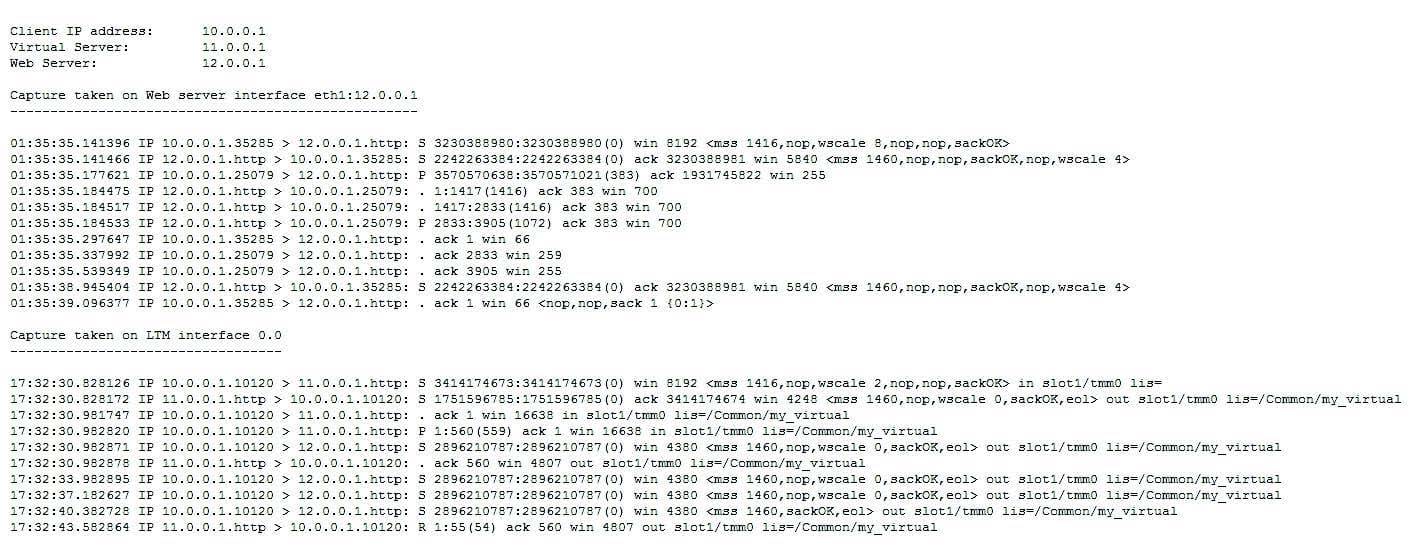
-- Exhibit -
Refer to the exhibit.
A pair of LTM devices are configured for HA. The LTM Specialist observes from a capture that there is a successful connection from a client directly to a web server and an unsuccessful connection from a client via the LTM device to the same
web server.
Which two solutions will solve the configuration problem? (Choose two.)
A. Configure SNAT on the pool.
B. Configure SNAT on the virtual server.
C. Change server default gateway to point at LTM internal self IP.
D. Change server default gateway to point at LTM internal floating IP.
-
Question 33:
-- Exhibit
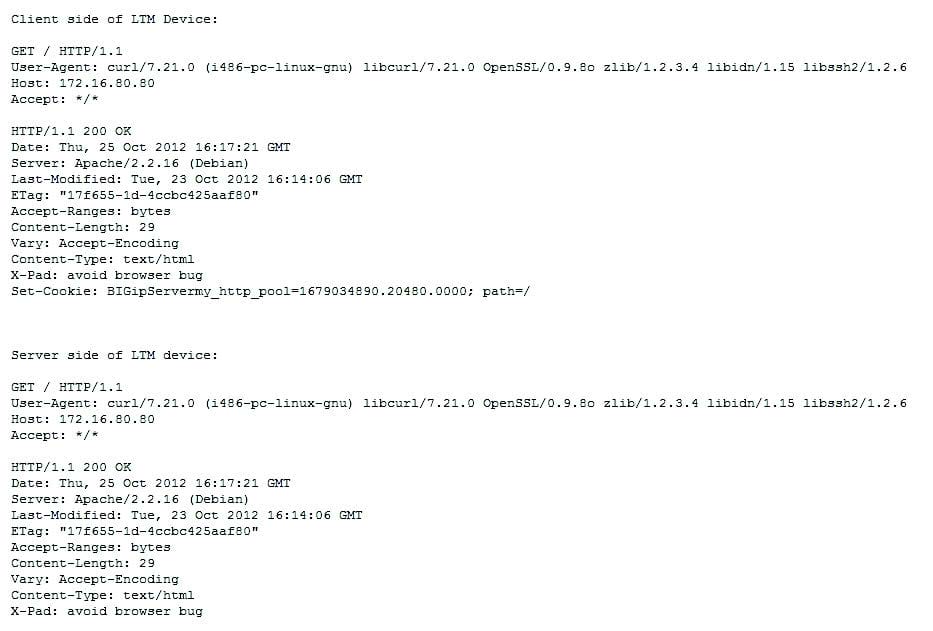
-- Exhibit -Refer to the exhibit. A web application is configured to allow sessions to continue even after a user computer is shut down for the night. A new LTM device is configured to load balance the web application to several servers. The application owner reports that
application users are logged out of the web application whenever their browser is restarted or computer is rebooted. What is the problem?
A. The virtual server does NOT have persistence configured.
B. The virtual server does NOT have persistence mirroring configured.
C. The cookie set by the LTM device does NOT have an "Expires" value.
D. The cookie set by the server is NOT being passed to client by the LTM device.
-
Question 34:
-- Exhibit

-- Exhibit -
Refer to the exhibit.
An LTM Specialist has created a virtual server to load balance traffic to a pool of HTTPS servers. The servers use client certificates for user authentication. The virtual server has clientssl, serverssl, and http profiles enabled. Clients are unable
to connect to the application through the virtual server. Clients are able to connect to the application servers directly.
What is the root cause of the problem?
A. The application server does NOT support 2048-bit keys.
B. The clientssl profile is NOT set to require a client certificate.
C. The LTM device does NOT trust the issuing CA of the client certificate.
D. The application server does NOT see the client certificate due to SSL offload.
-
Question 35:
-- Exhibit -- Exhibit -

Refer to the exhibit.
An LTM Specialist has created a virtual server to balance connections to a pool of application servers and offload SSL decryption. Clients connect to the application at https://www.example.com/. The virtual server is configured with a clientssl
profile but no serverssl profile. The application servers are listening on ports 80 and 443. Users are unable to connect to the application through the virtual server but are able to connect directly to the application server.
What is the root cause of the error?
A. The LTM device is chunking responses.
B. The LTM device is redirecting users to HTTPS.
C. The pool members are configured with the wrong port.
D. The application servers are redirecting users to HTTPS.
-
Question 36:
-- Exhibit

-- Exhibit -Refer to the exhibit.
The virtual server is listening on port 443.
What is the solution to the problem?
A. Add an SSL Client profile to the existing virtual server.
B. Modify the virtual server HTTP Profile to 'Redirect RewritE. All'.
C. Modify the virtual server TCP profile to disable Nagle's Algorithm.
D. Modify the virtual server HTTP Profile to 'Redirect RewritE. Matching'.
-
Question 37:
-- Exhibit
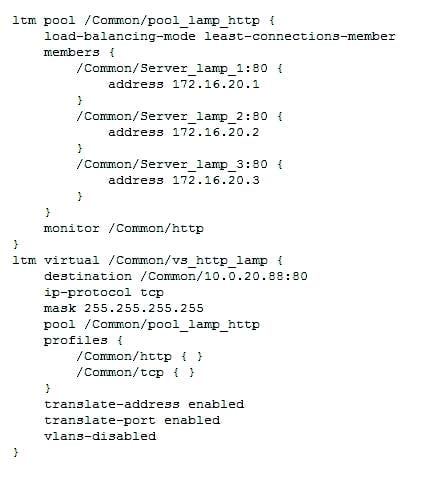
-- Exhibit -Refer to the exhibit.
Users report that a web application works incorrectly. Sometimes contextual data displayed on the web pages is accurate; other times it is inaccurate.
The LTM administrator looks at the connection table with a filter on one of the client IP addresses currently connected using the command "tmsh show sys connection cs-client-addr 10.0.20.1"
with the following results:
10.0.20.1:60048 10.0.20.88:80 10.0.20.1:60048 172.16.20.1:80 tcp 3 (tmm: 0) 10.0.20.1:60050 10.0.20.88:80 10.0.20.1:60050 172.16.20.3:80 tcp 3 (tmm: 0) 10.0.20.1:60047 10.0.20.88:80 10.0.20.1:60047 172.16.20.2:80 tcp 3 (tmm: 0)
10.0.20.1:60049 10.0.20.88:80 10.0.20.1:60049 172.16.20.1:80 tcp 3 (tmm: 0)
What is the solution to the problem?
A. Synchronize the clock of the LTM device with NTP.
B. Modify the load balancing method attached to the pool.
C. Set up an HTTP cookie insert profile in the virtual server.
D. Modify the setup of the monitor bound to the pool used by the application.
-
Question 38:
-- Exhibit
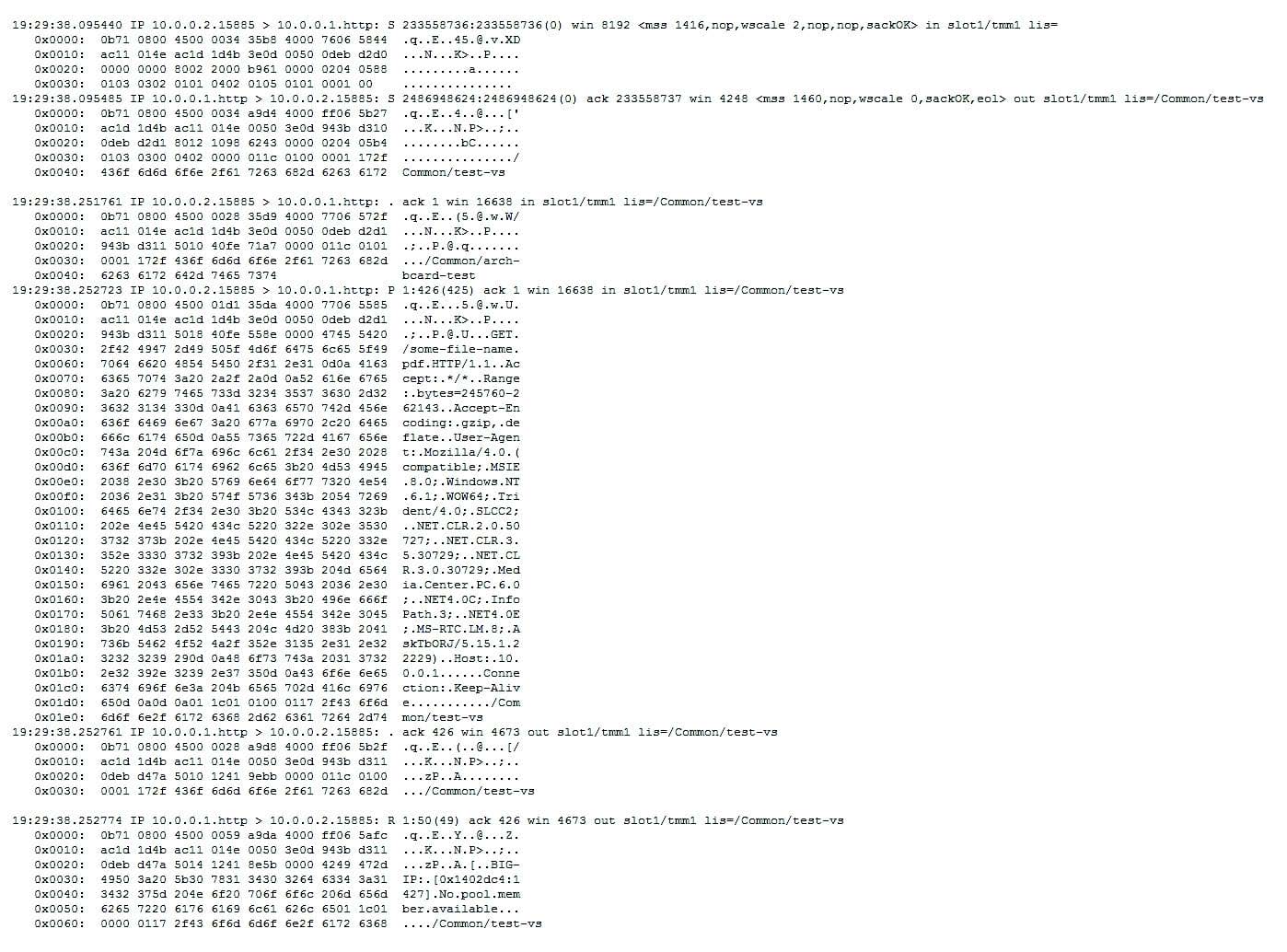
-- Exhibit -Refer to the exhibit.
A user is unable to access an HTTP application via a virtual server.
What is the cause of the failure?
A. The host header requires a host name.
B. The virtual server is in the disabled state.
C. The Connection: Keep-Alive header is set.
D. There is no pool member available to service the request.
-
Question 39:
-- Exhibit
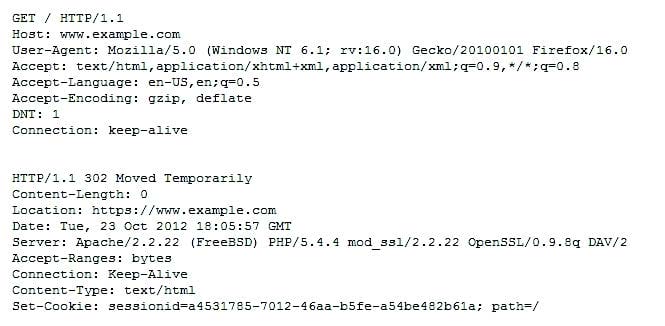
-- Exhibit -Refer to the exhibit.
An LTM Specialist is performing an HTTP trace on the client side of the LTM device and notices there are many undesired headers being sent by the server in the response. The LTM Specialist wants to remove all response headers except
"Set-Cookie" and "Location."
How should the LTM Specialist modify the HTTP profile to remove undesired headers from the HTTP response?
A. Enter the desired header names in the 'Request Header Insert' field.
B. Enter the undesired header names in the 'Request Header Erase' field.
C. Enter the undesired header names in the 'Response Header Erase' field.
D. Enter the desired header names in the 'Response Headers Allowed' field.
-
Question 40:
-- Exhibit
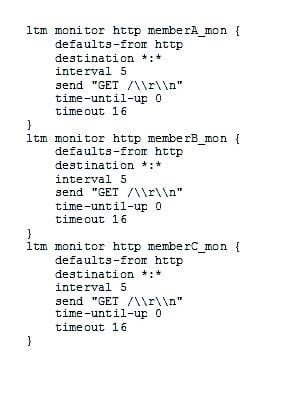
-- Exhibit -Refer to the exhibit.
An LTM Specialist is troubleshooting an HTTP monitor that is marking a pool member as down. Connecting to the pool member directly through a browser shows the application is up and functioning correctly.
How should the send string be modified to correct this issue?
A. GET /\r\n\r\n
B. GET / HTTP/1.0\r\n\r\n
C. GET /\r\nHost: \r\n\r\n
D. GET /\r\nHTTP/1.0\r\n\r\n
Related Exams:
101
Application Delivery Fundamentals201
TMOS Administration301A
BIG-IP LTM Specialist: Architect, Set up and Deploy301B
BIG-IP Local Traffic Manager (LTM) Specialist: Maintain & Troubleshoot302
BIG-IP DNS Specialist303
BIG-IP ASM Specialist402
F5 Cloud Solutions771-101
Application Delivery FundamentalsF50-506
F5 FirePass 600 V5F50-531
BIG-IP v10.x LTM Essentials V10.x
Tips on How to Prepare for the Exams
Nowadays, the certification exams become more and more important and required by more and more enterprises when applying for a job. But how to prepare for the exam effectively? How to prepare for the exam in a short time with less efforts? How to get a ideal result and how to find the most reliable resources? Here on Vcedump.com, you will find all the answers. Vcedump.com provide not only F5 exam questions, answers and explanations but also complete assistance on your exam preparation and certification application. If you are confused on your 301B exam preparations and F5 certification application, do not hesitate to visit our Vcedump.com to find your solutions here.